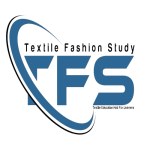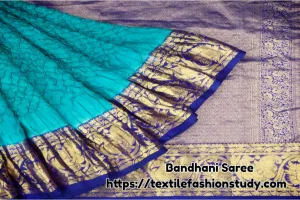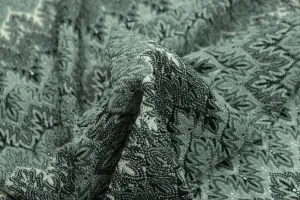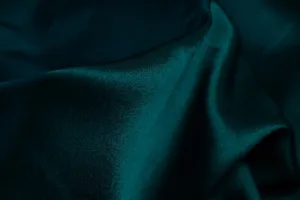Table of Contents
What is Textile Design Software?
Textile design software is characterized as one of the programs that is utilized to plan and record the textile design with the assistance of a computer. Alternately, textile design software programs are revolutionizing the mold and clothing divisions by combining the quality of computerized development with the imaginative soul of the past. It is significant for originators to comprehend the characteristics and capabilities of these cutting-edge instruments, since this advancement speaks to a considerable move in the way plans are realized. As we dig into the wide world of textile design software, we reveal its potential to change the texture plan into something more compelling, creative, and responsive to modern needs.
Textile buyers provide their favorite designs to facilitate their order. Regarding this, the customer claims that it is frequently necessary to change the textile’s pattern and color. If the manufacturer does this manually, it will take a long time and be imperfect. Design originators may effectively do immaculate work rapidly in this circumstance by utilizing material plan computer programs. But innovation is vital to making the inventive vision come to life in the energetic field of material planning. Creators may create complex plans, explore with color plans, and precisely reproduce materials with the assistance of material plan software.
In sum, fabric design software is important to the development of efficiency, productivity, and creativity in the field of textile design. With the use of these advanced apparatuses, originators may precisely and adaptably make, demonstrate, and progress texture plans.
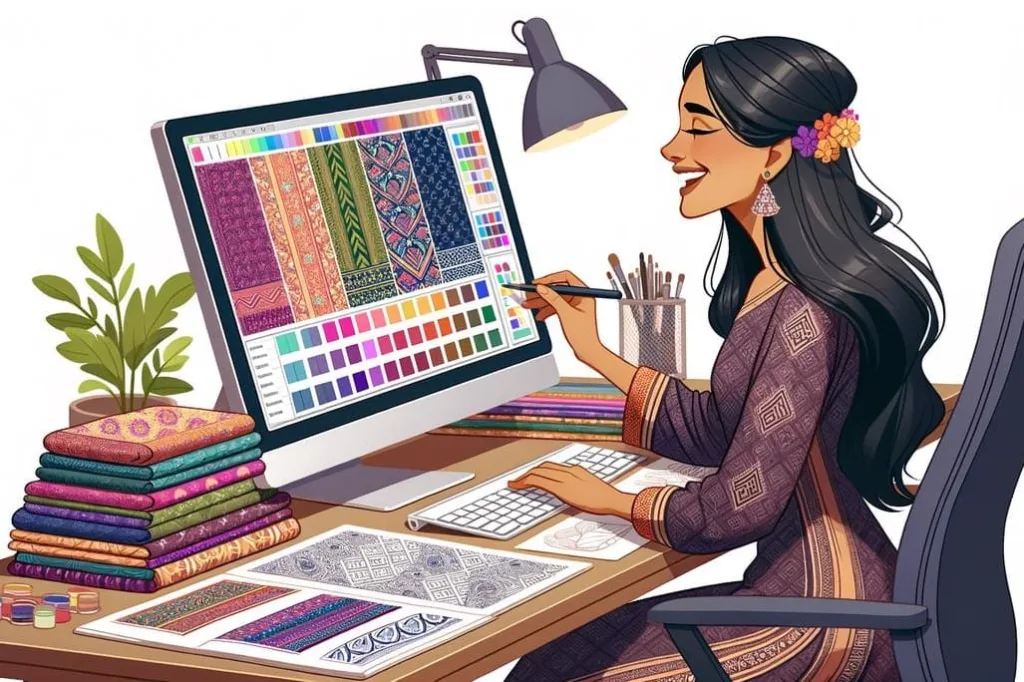
Key Features of Textile Design Software
Textile design software makes errands for material and mold creators exceptionally simple. In the world of the fashion and textile industries, the approach of material plan program has totally changed how originators envision and realize their thoughts. These imposing disobedient do more than fair make designs; they bring the whole plan handle into the computerized period, empowering inventiveness and efficiency. This conversation investigates the essentials of material plan program, uncovering the qualities that set it separated as a vital asset for cutting edge texture designers.
The crucial characteristics of textile design software vary from one to another for textile design. So, understanding the crucial components of program for textile software is vital. But some time recently materials are created, they may be made, modified, and seen in a virtual setting much appreciated to material plan program, which gives originators get to to a advanced canvas. These disobedient frame the premise of modern textile design, intertwining cutting-edge innovation with age-old mastery. Material plan program makes a difference the industry move toward a digitally-oriented future by giving a smooth combination of inventiveness and common sense. Key highlights of texture plan program incorporate the following:
- Color Management: Exact color administration is basic to material plan. Comprehensive color palettes and instruments are given by program arrangements to ensure that the colors you see on the screen are accurately the same as those printed on the cloth. This include is basic to protecting consistency and getting the expecting result in the wrapped up work.
- Pattern Creation and Editing: The era of complex designs is the crucial work of material plan program. With an broad determination of instruments and impacts, clients may modify pre-existing plans or make unused ones from scratch. However, this feature simplifies the design process and creates many personalization opportunities and creativity.
- Cooperation and Sharing: This is another important feature of clothing design software. This features facilities work together and exchange designs in the linked world of today. One of the characteristics of this software is cloud-based solutions that enabling designers to collaborate in real-time and share their work with customers or other team members from anywhere in the world.
- 3D Recreation: The capacity to demonstrate the aiming texture in a three-dimensional setting is one of the ground-breaking characteristics of advanced material plan program. This gives creators a reasonable see some time recently any fabric is ever made, empowering them to see how designs and colors show up on diverse materials and clothing. This feature improves decision-making process as well as it saves resources and time.
- Integration with Generation Apparatus: State-of-the-art material plan program works in harmony with fabricating hardware like looms and computerized printers. This coordinate connect diminishes botches and boosts efficiency by streamlining the prepare from plan to manufacturing.
- Repeats and Versatility: Consistent redundancies are a foundation of material plan. They too loan themselves to adaptability. Architects may effectively create rehashing designs with computer program devices, which ensures that the plan is versatile and production-ready. This work is basic for protecting the design’s judgment whereas managing with changing cloth sizes and shapes.
According to the over key properties of material plan computer program, it is at the bleeding edge of advancement, giving originators with a adaptable stage to investigate their thoughts whereas taking fabricating and customer desires into account. These innovations, which incorporate capabilities like color administration, design advancement, 3D recreation, and more, are changing the material commerce. We ought to anticipate much more modern capabilities as innovation creates encourage, which will raise the bar for material plan as both an craftsmanship and a science.
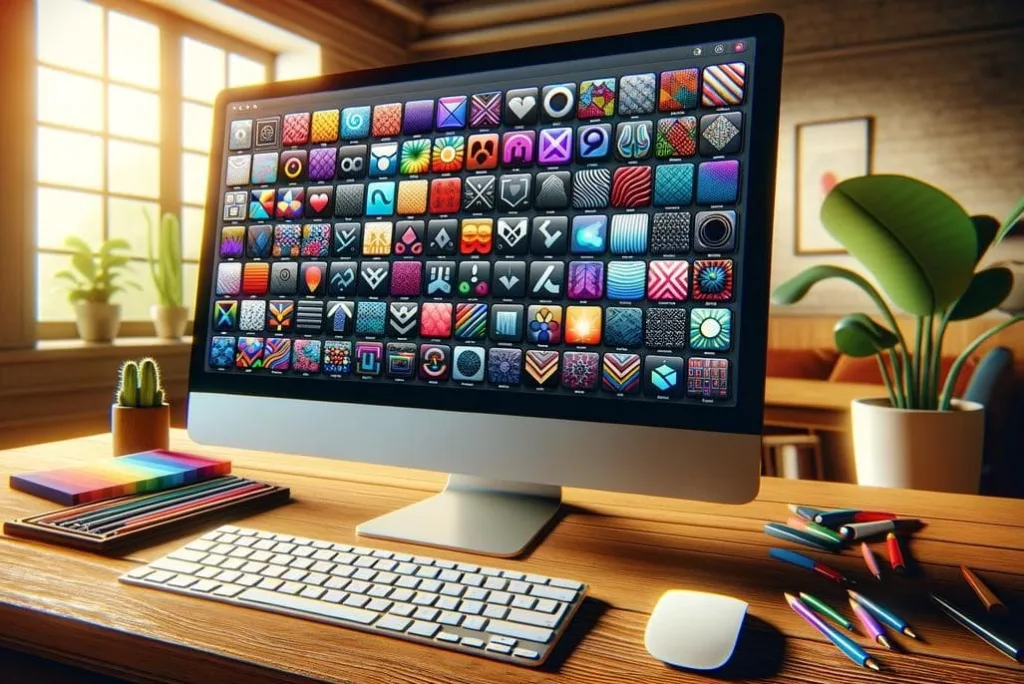
Textile Design Software: Specifications, Uses, Advantages, and Disadvantages
There are different types of textile design software that have been created to make the work of the textile industry easier and faster. Moreover, it is very important for a textile designer to have the necessary knowledge and use of software to understand the current fashion demand in the market. A fabric design software gives lots of advantages, which not only make any textile design interesting but also reveal the creativity of the designer. Designers, textile engineers, and manufacturers have different demands, and textile design software includes a variety of digital tools made to fit their needs. Designers may draw, alter, and visualize their ideas on a virtual canvas before they are realized, thanks to these software tools.
When you want to buy and use textile design software, you need to know about its specifications, uses, benefits, and limitations. I have presented the top textile design software list with its specifications, advantages, and disadvantages. they are-
Adobe Photoshop
Adobe Photoshop is one of the most vital computer programs for textile design. Numerous leaders, each with their own distinctive feature set, shape the digital terrain in textile design. Adobe Photoshop is a well-known program that has ability to alter photos, has unexpectedly complex uses in the textile design industry. Its ability to produce textures and colors gives designers opportunity to experiment with different hues and saturation levels, resulting in designs that have a vibrant, lively feel.
- Specifications: It needs platform such as Windows and macOS
- Pricing: It is a subscription-based model.
- Key Highlights: It gives layer-based altering, an broad brush library, and color alteration tools.
- Uses: Adobe Photoshop stands as a foundation in material plan, advertising capable instruments for making complicated designs, computerized outlines, and color plans. Creators use its flexibility to create point by point material plans, consistently mixing surfaces and colors.
- Advantages: 1. Extensive community support and tutorials, 2. Integration with Adobe Creative Cloud for seamless workflow, 3. Robust tools for photo manipulation and retouching.
- Disadvantages: 1. Steep learning curve for beginners; 2. requires a subscription; 3. may be costly for some users 4. Limited vector-based capabilities compared to dedicated design software
Adobe Illustrator
Adobe Illustrator has parcels of highlights that make planning errands exceptionally simple. The vector-based Photoshop identical, Adobe Illustrator, is amazing at creating clear, adaptable designs. For material creators looking for agreement and beat in their plans, it is an fundamental instrument since of its exactness in capturing repeating designs and motifs.
- Specifications: It too needs Windows, macOS platform.
- Pricing: It is a subscription-based model.
- Key Features: It is a vector-based drawing instruments, exact control over stay focuses, shape manipulation.
- Uses: Adobe Illustrator serves as a go-to arrangement for vector-based material plan, advertising unparalleled exactness and adaptability. Architects use its apparatuses to make consistent designs, complicated themes, and versatile plans reasonable for different material applications.
- Advantages: 1. Consistent integration with other Adobe Imaginative Cloud applications 2. instinctive interface reasonable for both tenderfoots and experienced architects 3. Exact control over stay focuses and ways for complicated designs.
- Disadvantages: 1. It is a subscription-based demonstrate may be expensive for consultants and little businesses 2. A soak learning bend for acing progressed highlights 3. Constrained raster-based altering capabilities compared to Adobe Photoshop.
CorelDRAW
It is another critical piece of computer program for clothing design.
- Specifications: The Windows stage is needed.
- Pricing: It permits one-time buy or subscription-based model.
- Key Highlights: Vector outline devices, page format usefulness, progressed typography.
- Uses: It stands as a flexible arrangement for textile designers, advertising a comprehensive suite of apparatuses for vector outline, format plan, and typography. Designers utilize its vigorous include set to make complex textile plans, logos, and limited time materials.
- Advantages: 1. One-time buy alternative is accessible, advertising cost-effective authorizing 2. It is comprehensive and suite for vector outline and format apparatuses 3. Progressed typography highlights for inventive expression.
- Disadvantages: 1. Restricted bolster for macOS, basically Windows-centric 2. interface may feel cluttered and overpowering for tenderfoots 3. Compatibility issues with certain record designs and third-party computer program.
NedGraphics
NedGraphics, a collection of computer program programs made to meet certain necessities in material plan, is another critical thing. NedGraphics gives arrangements for a assortment of material applications, counting sews, prints, and jacquard. Its capacity to combine creative plan with valuable application and pay consideration to the specialized features of material generation is what makes it so solid. This program addresses a basic perspective of material plan that combines imagination and manufacturability by ensuring that plans are not as it were outwardly excellent but too production-ready.
- Specifications: Stage: Windows
- Pricing: Custom estimating based on requirements
- Key Highlights: CAD/CAM integration, textile-specific devices, color management
- Uses: NedGraphics caters particularly to the material industry, advertising specialized program arrangements for material plan, generation, and visualization. Its CAD/CAM integration streamlines the design-to-production workflow, empowering consistent collaboration between designers and manufacturers.
- Advantages: 1. Custom fitted arrangements for material planning and generation 2. Integration with industry-standard CAD/CAM frameworks 3. Progressed color administration and recreation tools
- Disadvantages: 1. Custom estimating may be restrictive for small-scale businesses 2. Soak learning bend due to specialized highlights 3. Restricted bolster and community compared to standard plan software.
C-Design Fashion
C-Design Design is an progressed material plan computer program that helps in the creation and generation of dress, advertising an instinctive client interface, proficient highlights, and a total advancement prepare utilizing clean specialized records for information and estimation charts. It looks like C-Design Mold gives a total arrangement for design plan and fabricating, emphasizing proficient highlights, ease of use, and integration over the entirety plan life cycle. In any case, some time recently utilizing the program for their design plan needs, potential clients ought to think around things like estimating, learning bends, and bolster choices.
Specifications:
- Technology: A assortment of programming dialects and systems, such as C++, Java, or others, may be utilized to construct C-Design Fashion.
- System Necessities: These would incorporate least equipment specs and upheld working frameworks, among other equipment and computer program requirements.
- Features: The program likely has devices for material plan, design creation, color administration, drawing, and perhaps indeed 3D modeling and visualization.
- Integration: C-Design Design may have the capacity to coordinated with other program instruments or frameworks that are frequently utilized in the mold industry, such as PLM (item lifecycle administration) frameworks or CAD software.
Uses:
C-Design is the design plan Computerized drawings, designs, and plans for clothing and adornments are the primary employments of fashion.
- Pattern Making: It makes a difference with reviewing and settling as well as the plan and alteration of clothing patterns.
- Texture Plan: The program may come with instruments for making and adjusting materials, such as rehashing designs and color schemes.
- Visualization: To get a superior thought of how thoughts would see in genuine life, clients may see plans in 2D and maybe 3D.
- Collaboration: By empowering record sharing and concurrent plan work, it might offer assistance plan groups collaborate more effectively.
Benefits:
- Specialization: C-Design Mold offers highlights and workflows valuable to creators and engineers, and is especially planned for the design sector.
- Efficiency: By advertising apparatuses for drawing, making designs, and planning materials on a single stage, it disentangles the plan process.
- Accuracy: By utilizing exact designs and plans, clients may cut down on botches and squander less material.
- Visualization: By empowering practical plan visualization, the computer program helps in a way better understanding of the wrapped up item by clients and designers.
Limitations:
- Learning Bend: C-Design Mold, like numerous forte computer program programs, seem have a learning bend that makes it troublesome to utilize without practice.
- Cost: For person creators or littler design companies in specific, the program may be restrictively expensive.
- Compatibility: It might not work well with other programs or record sorts that the design industry employments, requiring transformation or integration efforts.
- Support: Overhauling and bolster approaches might contrast all through merchants, which might cause issues with investigating and upkeep.
Procreate
Procreate is another material plan software.
- Specifications: It performs as it were in iPadOS
- Pricing: One-time purchase
- Key Highlights: Natural drawing devices, progressed brush motor, layer-based editing
- Uses: Reproduce has developed as a well known choice for texture architects, advertising a flexible stage for advanced outline and design creation. Originators use its instinctive interface and progressed brush motor to portray, paint, and refine texture plans with characteristic accuracy and fluidity.
- Benefits: 1. Consistent integration with Apple Pencil for exact input 2. broad library of brushes and surface packs 3. Non-destructive layer-based altering for experimentation
- Limitations: 1. Restricted to iPadOS stage, confining compatibility 2. Need of progressed vector-based devices compared to desktop program 3. Restricted back for complex plan workflows and record designs
Enterprise Resource Planning (ERP)
ERP program is a central database utilized for bigger trade purposes, counting distribution center administration and acquiring administration. It helps in different divisions of the material industry, such as generation arranging, fabricating asset arranging, fabric prerequisite arranging, client relationship administration, charge of fabric, and shop floor control. It improves client benefit, item quality, and decision-making processes.
Specifications:
- Technology Stack: Database administration frameworks, web innovations, and programming dialects like Python, Java, and.NET are fair a few of the innovations that ERP material plan program ordinarily uses.
- Scalability: More clients, information, and exchanges ought to be conceivable with program that can grow with material companies.
- Customization: the capacity to modify highlights, reports, and workflows to fulfill the needs of material plan and fabricating procedures.
- Integration: smooth interaction with different frameworks, counting bookkeeping computer program, stock administration frameworks, and CAD (computer-aided plan) software.
Applications:
Textile plan administration is the prepare of managing all viewpoints of material plan, counting design plan, color administration, and testing, from concept to production.
- Inventory and Supply Chain Administration: supply chain following of crude materials, materials, and completed things; stock optimization; provider relationship management.
- Order administration incorporates preparing buyer orders, checking arrange status, controlling estimating, and arranging generation to guarantee that conveyances are made on time.
- Financial administration: streamlining bookkeeping methods, charging, arranging, and monetary detailing that are pertinent to the material sector.
- Compliance and Quality Control: Making beyond any doubt that industry standards and laws are taken after, as well as keeping an eye on quality control amid the generation process.
Benefits:
Centralized Information Administration: All data relating to company operations and material plan is kept in one single database, empowering data-driven decision-making and advertising real-time insight.
- Process Proficiency: Lessening human botches and streamlining workflows are two ways to increment operational proficiency. Mechanization of dreary operations moreover helps.
- Collaboration Has Moved forward: There has been an increment in the trade of data and participation over different offices and partners in the company.
- Data analytics: Educated key choices are made conceivable by built-in analytics and detailing devices, which offer experiences into generation execution, customer behavior, and showcase trends.
- Scalability: ERP frameworks are adaptable, permitting for extended operations and higher generation volumes as the material industry grows.
Limitations:
- Cost: ERP framework usage and permit expenses can be tall, especially for little and medium-sized material enterprises.
- Complexity: ERP establishments some of the time call for a incredible bargain of arrangement, personalization, and preparing, which may be troublesome and time-consuming for users.
- Integration Troubles: Specialized troubles and additional assets may emerge when coordination ERP frameworks with third-party program or bequest frameworks that are as of now in place.
- Maintenance and Bolster: It may gotten to be more costly and resource-intensive to give continuous upkeep, overhauls, and bolster services.
- Opposition to Alter: The viable execution of ERP material plan program may be hampered by employees’ unwillingness to alter to modern strategies and frameworks.
SnapFashun
Software for textile or fashion design that is easy to use, maximizes output, and is reasonably priced. Not only is it a very useful program for professionals, but it is also quite practical for students studying textile design. Numerous designers have already expressed interest in this program due to its hundreds of pre-designed templates and drawing tools.
The following are some of the key components of the SnapFashun program, including:
- It is a digital reference source
- The drug and drop Area
- Integrating Adobe Illustrator with Sync
- It provides complimentary templates
- Complimentary Scabs
TexAMS ERP
The TexAMS ERP software functions as a manufacturing plan for textiles, including raw materials, finance, quality control, sales reps, and so on. In addition, this program may be used for customer service and the planning of textile products. In the textile subindustry, this software is used to tackle a wide range of intricate issues related to spinning, weaving, textile textiles, and yarn dyeing. This textile design software is also useful in the following areas: financials; material requirements planning; inventory control; quality control; sales; distribution planning; finished goods inventory; yarn dyeing; weavers; maintenance; and so on.
WinMan
WinMan is textile industry-related high-capacity software that supports prompt and deliberate decision-making. However, it contributes to the decrease in the creation of textile waste in addition to the production and profitability of textile goods. WinMan is a versatile, non-modular system that can finish a lot of challenging industrial operations rapidly. In addition to many other uses, it may be applied to document management, project management, supply chain management, CRM, WMS, planning and scheduling, and product configuration.
ArahWeave
Reaching outside of the Adobe Suite, ArahWeave is a niche competitor that focuses only on the textile industry. By providing designers with an all-inclusive tool that combines technology with the tactile sense of textiles, this program takes pride in its ability to comprehend the fabric’s very threads. ArahWeave is an expert in weaving simulations, allowing designers to see their creation in a variety of weaves well in advance of the first thread ever being spun on the loom. The flawless transition from digital design to actual material is ensured by this essential end-product foresight.
Pattern Design Software
EFI Optitex offers Pattern Design as an open source program. This program offers end-to-end solutions connected to textile design. A designer or user can get assistance from Pattern Design Software with all aspects of design, development, and manufacturing. Some key characteristics of pattern design software are as follows:
- Accessibility of Virtual Images
- Working together with the manufacturer of cutting layout tools, customizable fabrics, and textile accessibility Illustrator 3D Design Samples of 2D Patterns
Apparel Maestro
A software program called Apparel Maestro can track the number of textile items and identify the type, size, and color of apparel. Activities related to clothes can be managed using this program. Numerous more tasks may be completed using this program, including A/P factoring, defining prepack configuration, creating lot numbers with three segments (one constant and two user-definable choices), entering colors dynamically, and selling and buying items based on size, style, and color.
The use of technology in textile design also encourages conversations about sustainability. In this instance, reducing waste and enhancing sustainable practices in the textile industry depend heavily on digital design tools. These technologies provide precise simulations and predictions of the final product, which helps designers cut down on overproduction and wasteful material use. Technological integration is therefore in line with the industry’s aim to be sustainable, underscoring the need to choose software that respects moral principles in addition to enhancing design. Overall, textile design software is used in different fields of clothing design such as t-shirts, polo shirt, trouser, jacket, pant, shirt and others garment.
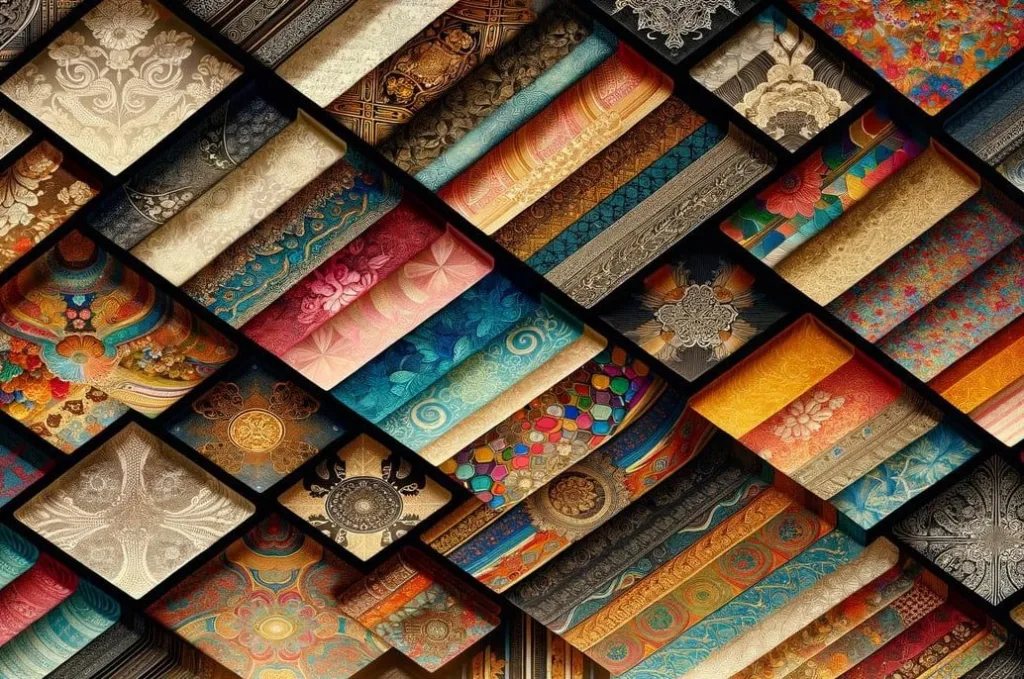
In conclusion, it is evident that this digital revolution has the potential to propel the fabric and fashion industries to previously unheard-of heights, as we have examined the fundamental functions, uses, and potential future developments of textile design software. These technologies provide a unique combination of creativity, efficiency, and innovation that not only supports market trends and production demands, but also improves the creative process. The potential for textile design is endless as a result of the constant advancement of technology, pointing to a future in which creative possibilities are only limited by the imagination.
So, if you want to buy textile design software, you can visit the respected software company’s website.
Reference:
- Textile Visionaries: Innovation and Sustainability in Textile Design-by Bradley Quinn
- Digital Textile Design-by Melanie Bowles and Ceri Isaac
- Computer-Aided Design and Manufacturing, by M.M. Awad
- Respected textile design software website.
